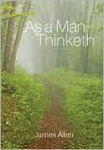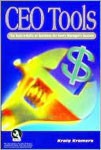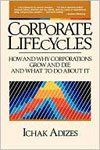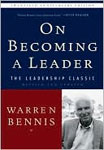Books That Influenced Me
What a gift it is that writers and teachers give to the world.
The ripple effect is of considerable magnitude.
Power vs. Force by David R. Hawkins M.D. Ph.D.

I highly recommend Power vs. Force, which very simply explains the power of levels of consciousness. I quote David Hawkins a number of times in my book, Managing Thought and with Hawkins’ permission, excerpted a table from his book on powerful vs. weak thought patterns. This book was of significant influence for me on my own path to self-awareness. There were a number of aha!s for me as I read this book. For example, up until reading this book, I approached my work and my own self-cultivation by looking for what was wrong and then working on making it right, even under the guise of continuous improvement. As a result, I missed out on the joy of my life, my work, and my expansiveness. When I learned from this book that the difference in power between a so-called bad thought and a so-called good thought was so enormous as to be beyond my comprehension, I realized how just a few powerful, constructive, loving thoughts a day could far outweigh all of my weak, non-constructive, and fearful thoughts. I realized that I could effortlessly transform my thinking and my reality by focusing on the powerful thoughts I choose to have and not the weak thoughts I don’t want to have. Another aha! was that thoughts are neither good or bad–they are simply a function of viewpoint. And a very freeing lesson for me was the learning that by raising my level of consciousness, I make a difference a difference in raising the collective consciousness of the world.
Get it on Amazon
Get it from Barnes & Noble
As a Man Thinketh by James Allen

Many people consider James Allen as the founder of the personal development industry and many teachers credit this book for providing the foundation to their teachings. This small, yet impactful book, was of significant influence to me as I began my path of self-cultivation. I quote from As a Man Thinketh a number of times in my workshops and in my book and audio book, Managing Thought. I am so thankful for James Allen who, through this timeless work, has helped so many people to understand and take responsibility for their thoughts.
Get it on Amazon
Get it from Barnes & Noble
CEO Tools by Kraig Kramers

I first met Kraig in the early 1990’s when I was doing start-ups of new companies and turnarounds of businesses in crisis and have used all of his tools with great success. I consider CEO Tools one of my top 10 all-time favorite business books and recommend this to all of my clients. In my book and audio book , Managing Thought, I talk about the power of purpose and vision, being of service, seeking to understand, and celebrating success. CEO Tools does a great job of showing how to implement these practices in a business environment.
Corporate Lifecycles by Ichak Adizes

While this book was written in the 1980’s, I believe it is timeless. I consider Corporate Lifecycles to be one of my top 10 all-time favorite business books and recommend it to all of my business clients. In my book and audio book , Managing Thought, I talk about the power of self-awareness, seeing what is, seeking first to understand vs. being understood, asking questions without blame, judgment or being a victim, and establishing purpose and vision. Corporate Lifecycles does a superb job of showing how to implement these practices in a business environment and how being of highest and best service brings about significant results. He offers proactive measures for maintaining focus and vision, nurturing a climate of mutual trust and respect and avoiding the onset of aging in corporate structures. With Dr. Adizes´ strategies to anticipate and ease the normal, predictable problems of growth, every organization can reach Prime — and stay there.
Gandhi: His Life as a Message for the World by Louis Fischer

Gandhi’s life and teachings, to me, serve as the highest example of power vs. force and that a small group of people can indeed change the world. I met Gandhi’s grandson, co-founder of TKF, a non-profit organization that teaches non-violent solutions to children and teens. He spoke of a significant lesson he learned from his grandfather–that non-physical violence leads to physical violence. He said that we tend to concern ourselves with solving physical violence when it is far more impactful to solve our own acts of non-physical violence. Inattention to our children, wasting natural resources, and when we are not ourselves practicing peace in our homes and communities, we are committing acts of non-physical violence which leads to future physical violence. I quote Gandhi a number of times in my book and audio book, Managing Thought and in my workshops. If you want to learn about Gandhi, this book, Gandhi: His Life and Message for the World, is a great one to read. It’s less than 200 pages yet contains the essentials of his life and work.
Get it on Amazon
Get it from Barnes & Noble
Heal Your Body by Louise L. Hay

Over 30 million copies of this book have been sold worldwide. Louise’s key message in this powerful work is: “If we are willing to do the mental work, almost anything can be healed.” The book includes a comprehensive list of physical ailments, the probable thought patterns that give rise to the illness, and new thought patterns to practice to eliminate the old thought patterns and effect healing. In my book, Managing Thought, I talk about how our thoughts affect our lives, our careers, our relationships, our health, our circumstances, and our success–and how to change them. I have found Louise Hay’s book, Heal Your Body, to be THE most practical guide to help anyone become aware of the impact our thoughts have on our mind, body, and spirit. While I intuitively knew the truth of Louise’s writing, when I first bought this book in the late 80″s, the accountant in me had to prove it to be true, so I went through the extensive list of ailments and highlighted every illness I had ever had. I was amazed to note that indeed, and in every case, the thoughts Louise listed as probable causes were indeed the thoughts ruling my world at that time.
Man’s Search for Meaning by Victor E. Frankl

Man’s Search for Meaning is considered among the most influential works of psychiatric literature since Freud. It begins with a moving personal essay about Frankl’s five-year imprisonment in Auschwitz and other concentration camps, and his struggle during this time to find reasons to live. The second part of the book describes the psychotherapeutic method that Frankl pioneered as a result of his experiences in the concentration camps and the resulting belief that man’s deepest desire is to search for meaning and purpose. The profound lessons for me from this book are key messages in my workshops and in my book and audio book, Managing Thought — that what we think is a matter of choice, that no one else and nothing else is responsible or to blame for what we choose to think; and that thoughts of purpose and possibility are powerful thoughts that bring us peace and inspire us and connect us with our highest awareness.
Meditation -An Eight Point Program by Eknath Easwaran

I began practicing meditation in the 8th grade, fortunate to have parents that took me to learn transcendental meditation, also known as TM. I learned through experience that I am completely in touch with my creativity and highest awareness when I am in a state of calm and that through the continued practice of meditation, I am able to experience calm no matter what is happening about me. This inspired me to write the chapter, Infinite Calm Brings Immediate Results in my book and audio book, Managing Thought and I quote Eknath Easwaran from his book, Meditation, several times in mine. I have studied various forms of meditation through the years and have found this book to be the most practical guide to teaching anyone how to tap their inner resources and achieve clarity and focus in all they do through meditation. Eknath Easwaran is considered to be the foremost teacher of meditation and founded the Blue Mountain Center of Meditation in Northern California in 1961. This book is a must read for anyone who wants a no-nonsense approach to learn how to meditate.
On Becoming a Leader by Warren G. Bennis

In my book and audio book, Managing Thought, I mention that my teachings represent thousands of years of wisdom from many roads — business, psychology, neurology, biology, chemistry, physics, metaphysics, and spiritual teachings. On Becoming a Leader by Warren Bennis is a timeless book and was of particular influence to me early in my business career. Bennis discusses how leadership requires self-awareness, self-control, clear personal goals, curiosity, and faith in an “inner voice.”
Get it on Amazon
Get it from Barnes & Noble
QBQ! The Question Behind the Question by John G. Miller

One of the test readers of my book and audio book, Managing Thought, showed me this book after reading my chapter: Shaping Thought-Asking Powerful Questions. I absolutely love this book. It’s all about taking responsbility for the quality and quantity of our lives and circumstances and offers great suggestions on how to ask questions that lead us in a direction that truly serves our purpose. QBQ! The Question Behind the Question is a quick, enjoyable read and a powerful guide and reference tool for choosing powerful thoughts in the form of a question.
Get it on Amazon
Get it from Barnes & Noble
7 Habits of Highly Effective People by Stephen R. Covey

The 7 Habits of Highly Effective People: Powerful Lessons in Personal Change was considered a ground breaker when it was first published in 1990, and it continues to be a business bestseller with more than 10 million copies sold. Believe me, I was honored, am honored, when McGraw-Hill and others say they believe Managing Thought is as profound and as timeless as 7 Habits. This book introduced the concept of true success and the balance of personal and professional effectiveness, covers the importance of self-mastery, having a vision and purpose, and being proactive. In this book, Covey coined the phrase “paradigm shift”–a change in perception and interpretation of how the world works.
The Complete Works of Lao Tzu: Tao Teh Ching & Hua Hu Ching by Hua Ching Ni

The Tao Teh Ching is one of the most frequently translated and most cherished works in the world. This is an ancient Chinese classic, and while written around 500 B.C., it provides a very practical guideline for natural and harmonious living, even today. This particular translation by Hua-Ching Ni, called The Complete Works of Lao Tzu also includes one of the only written translations of the Hua Hu Ching. I quote Lao Tzu in the “Enjoy the Journey” chapter of my book and audio book, Managing Thought. Each reading offers timeless teachings that have helped me to focus on what truly matters to me in work and in life and to enjoy a life well-lived.
The Farther Reaches of Human Nature by Abraham H. Maslow
(Introduction by Henry Geiger, Preface by Bretha G. Maslow)

I am often asked what I studied in my journey of self-discovery that led to my book, audio book and workshops, ManagingThought. I explain that many roads lead to Rome. On the psychological path, The Farther Reaches of Human Nature significantly influenced me. Maslow wondered why we study what we don’t want, sickness, and instead studied what we do want, health. Maslow’s Hierarchy of Needs and his teachings on self-actualization explain man’s expansive nature and our genuine interest in expanding our level of consciousness and becoming fully human.
Siddhartha by Hermann Hesse , Hilda Rosner (Translator)

This novel, is the story of the journey of the Buddha. Siddhartha, a young man, leaves his wealthy family for a contemplative life seeking enlightenment, then, restless, discards it for one of the flesh. He conceives a son and bored and sickened by lust and greed, he moves on again. Near despair, Siddhartha comes to a river where he hears a unique sound. This sound signals the true beginning of his life — the beginning of suffering, rejection, peace, and, finally, wisdom. Before I read this book, I looked upon my past difficulties and big mistakes with disdain, even shame. While I viewed them as learning experiences that shaped who I am today, I was not feeling the joy of life. The aha! came when I realized I could view my life as one big, beautiful river. Some parts are rough, some are smooth sailing. Some parts are low, some high. Some parts are murky and some are crystal clear. Some are ugly and some are amazingly beautiful. When I rise, and look at that river from above, it is one big beautiful river. From that point on, I could love my humanity as well as my divinity. I could look at my life as an adventure, wondering what each experience could create. And I could acknowledge and celebrate every step of the journey.
Get it on Amazon
Get it from Barnes & Noble
Managing Thought: Think Differently. Think Powerfully. Achieve New Levels of Success.
by Mary J. Lore

Managing Thought sprouted from an “aha” moment when—drained, unhealthy and completely out of balance—I realized that my thoughts were creating my reality. I developed a systematic approach, a step-by-step process to be aware of my thoughts, notice if my thoughts were in alignment with what I truly wanted to create in my life and work, and think differently, powerfully, to achieve significant results, profound change, my highest vision. Even though I wrote the book, the book was inspired. I r e-read it as a gentle reminder, and I continue to learn from the book as my experiences and wisdom evolve and expand. The book, in its fourth printing, is read around the world and has earned six best book awards in business motivation, leadership, communication, philosophical thought leadership, self-help, and spiritual enlightenment (previous winners in this category: Eckhart Tolle, Deepak Chopra, and the Dalai Lama.) My publishers said that it’s highly unusual for a book to be recognized as exemplary by such diverse organizations and in so many categories. They said they believe the book will be as, or more, far-reaching than The Seven Habits of Highly Effective People and How to Win Friends and Influence People. It’s my mission to be of highest and best service to you. Any time I can help you fulfill your highest intentions and be the highest vision of yourself, I am of service to the world. The ripple effect is of considerable magnitude.